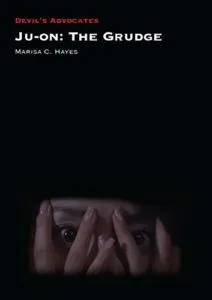Alongside the likes of Ring and Audition, Ju-on: The Grudge was one of the first Japanese horror films to ever grace my collection. I still contend that it’s simply one of the finest supernatural horrors of the past twenty-five years, though perhaps unfairly, it’s now often seen as so much less than that – a victim of its own success, then its ubiquity. But Ju-on: The Grudge, though not the first film in the Ju-on series, did significant work: firstly, it brought the ancient idea of a haunting into a modern setting, turning light, airy urban spaces and modern technology into easily-infiltrated vehicles for its terror. Beyond this, it introduced Western audiences to a totally new rationale for a haunting: as the on-screen text tells us at the very beginning of the film, the events all hinge on someone dying whilst in the grip of rage, which passes on a kind of curse, which affects all the places in which that person once lived.

Blending knowledge of Japanese folklore and custom with acres of social context, the book told me a great deal that I didn’t already know. For example, I wasn’t aware that Takako Fuji, the actress who plays the female ghost Kayako, is also a voice actress who worked on the decidedly less-traumatic anime, Princess Mononoke. There’s much more in this vein; a section of the book forges links between the film and things such as Kabuki theatre, Butoh, a kind of modern dance (observable in the motions and gestures of the spectres) and even the significance of the long, dishevelled hair motif is explored and historicised. Hayes also takes in the influence of Lafcadio Hearn, a European who naturalised as a Japanese citizen and set about recording and popularising Japanese folklore, which eventually fed back into Japanese cinema – perhaps the first example of Japanese and European horror fusion, the likes of which we’ve seen in abundance during the late 20th and early 21st centuries. There’s even a section on cats in Japanese culture (which, by the by, reminded me of that otherworldly yowling cat cry made by Toshio in the film which still sends shivers down my spine.) Want more? The book has fascinating content on the film’s links to Buddhist belief, contagion, Japan’s epidemic of domestic abuse, its ageing population…all of which are neatly linked to the film in a series of engaging and cogent ways.
Whilst broadly academic in tone, the book is definitely accessible; although there’s a brief mention of academic-reference stalwarts like the clever-if-odious Foucault, and Bataille, Hayes ensures that this approach doesn’t dominate, and she has clearly spent just as much time trawling fan sites and blog posts, no doubt occupying the overlapping space between both worlds herself. This shows throughout in an approach which balances detail, enthusiasm and knowledge. In fact, probably the biggest compliment I can pay to the book is that it’s reminded me of just how fresh and exciting Ju-on: The Grudge was when it first appeared, and made me want to watch it again. As if that wasn’t enough, the book also runs through all of the other chapters in the franchise, too. It’s the definitive deal.
If you have a love for J-Horror, or even if you simply want to know more about the background of a film which has wound its way into horror culture over the last decade and more, then this book is heartily, definitely recommended. This is exactly what film writing should be.
The Devil’s Advocates series is available via Auteur Publishing. You can find out more here.
